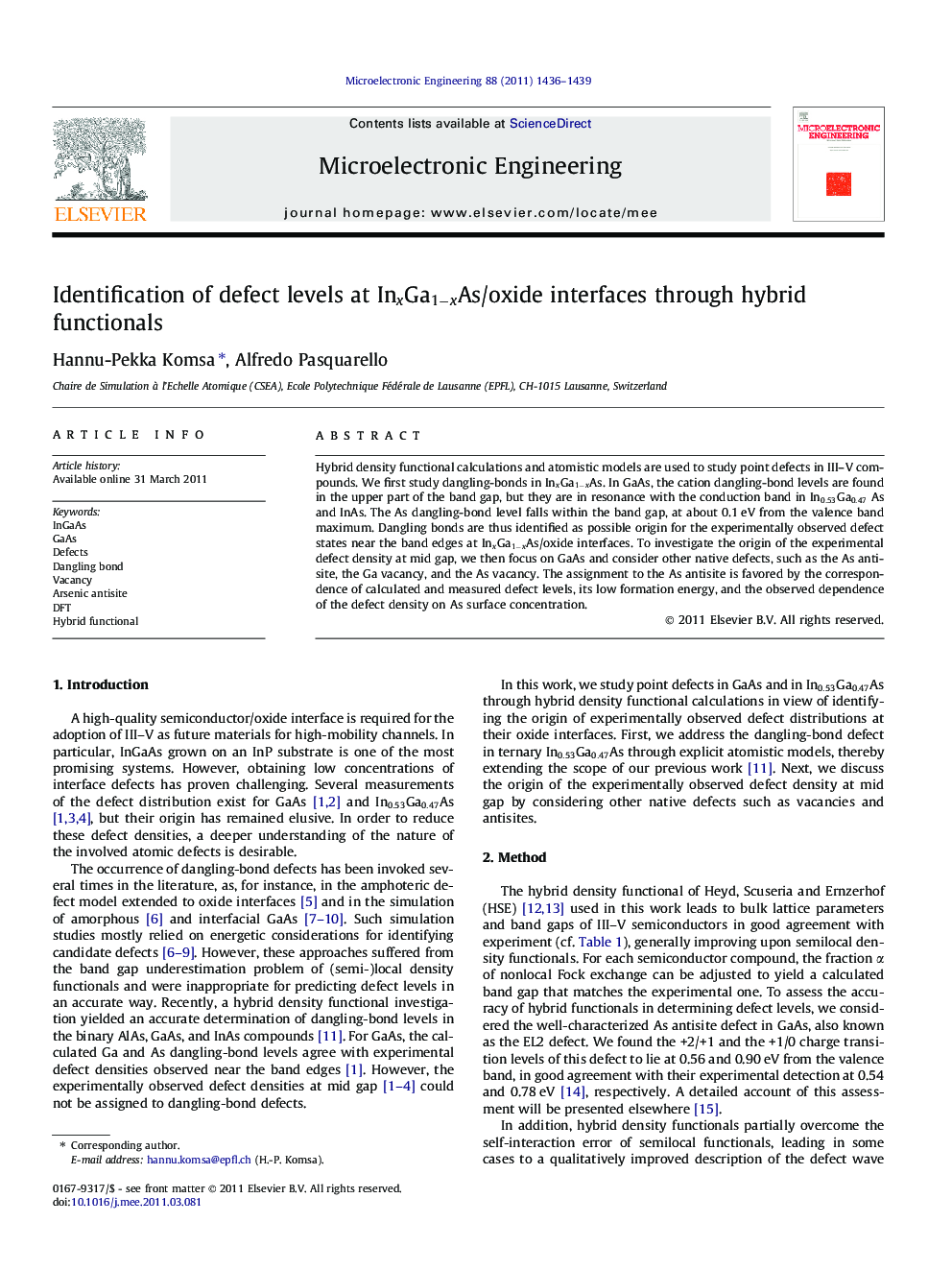| Article ID | Journal | Published Year | Pages | File Type |
|---|---|---|---|---|
| 540539 | Microelectronic Engineering | 2011 | 4 Pages |
Hybrid density functional calculations and atomistic models are used to study point defects in III–V compounds. We first study dangling-bonds in InxGa1-xInxGa1-xAs. In GaAs, the cation dangling-bond levels are found in the upper part of the band gap, but they are in resonance with the conduction band in In0.53Ga0.47In0.53Ga0.47 As and InAs. The As dangling-bond level falls within the band gap, at about 0.1 eV from the valence band maximum. Dangling bonds are thus identified as possible origin for the experimentally observed defect states near the band edges at InxGa1-xInxGa1-xAs/oxide interfaces. To investigate the origin of the experimental defect density at mid gap, we then focus on GaAs and consider other native defects, such as the As antisite, the Ga vacancy, and the As vacancy. The assignment to the As antisite is favored by the correspondence of calculated and measured defect levels, its low formation energy, and the observed dependence of the defect density on As surface concentration.
Graphical abstractOverview of defect levels of various native defects in GaAs, as calculated in this work and compared to values found in the literature.Figure optionsDownload full-size imageDownload as PowerPoint slideResearch highlights► We perform hybrid functional calculations for native defects in GaAs and InGaAs. ► We assign the experimentally observed interface defects near the band edges to dangling bonds. ► For the interface defects near mid gap, the As antisite is found to be the most likely candidate.
